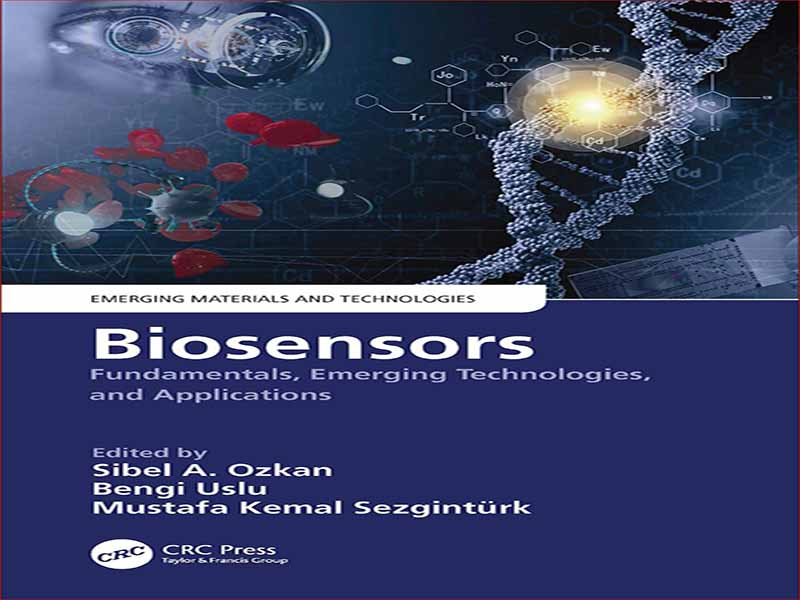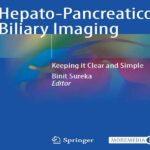- عنوان کتاب: Biosensors Fundamentals, Emerging Technologies, and Applications
- نویسنده: Pranjal Chandra
- حوزه: حسگر زیستی
- سال انتشار: 2023
- تعداد صفحه: 395
- زبان اصلی: انگلیسی
- نوع فایل: pdf
- حجم فایل: 16.4 مگابایت
داستان در سال 1956 با اختراع یک حسگر زیستی گلوکز بر اساس تشخیص الکتروشیمیایی اکسیژن آغاز شد که در آن نقش حیاتی به الکترود اکسیژن کلارک نسبت داده شد. جالب اینجاست که قبل از این اختراع، زمانی که پروفسور لیلاند کلارک تلاش کرد نتایج اولین اکسیژن ساز حبابی خود را منتشر کند، دستنوشته او توسط سردبیر مجله رد شد زیرا نمی توانست کشش اکسیژن را که از اکسیژن ساز بالا می رود اندازه گیری کند. با این حال، این او را متوقف نکرد و او را به افشای الکترود اکسیژن تشویق کرد. از زمان اختراع وی، الکترود کلارک در سیستمهای حسگر زیستی بیشماری برای شناسایی آنالیتهای متعدد مرتبط با تنظیمات بالینی، غذایی، محیطی و سایر موارد استفاده شده است. از نظر تاریخی، الکترود اکسیژن کلارک نقطه عطفی در توسعه مفاهیم جدید حسگر زیستی بود که برای همه حوزههای علمی مورد استفاده قرار میگرفت. در طول سال ها، علوم بنیادی دستگاه های فن آوری مدرن را بهبود بخشیده است که پیشرفت علوم پایه را سرعت بخشیده است. در نتیجه این پیشرفت، از زمان معرفی اولین نسل از حسگرهای زیستی گلوکز توسط کلارک، سیستمهای انتقال جدید و گیرندههای زیستی جدید مانند آنتیبادیها، سلولهای کامل، اسیدهای نوکلئیک، آپتامرها و غیره معرفی و دستکاری شدهاند. شناسایی انواع مختلف اهداف با این حال، سیستمهای قابل حمل، مقرونبهصرفه، کاربرپسند و یکپارچه حسگر زیستی علیرغم تمام این دستکاریها به اندازه کافی در خدمات مردم استفاده شدهاند. علاوه بر این، نیاز فزاینده ای به ادغام الکترونیک کوچک و گیرنده های زیستی بیولوژیکی/سنتتیک/مهندسی در یک تراشه کوچکتر از سر سوزن وجود دارد.
نیاز به چنین ابزارهای تشخیصی قابل حمل برای کشورهای در حال توسعه که از امکانات آزمایشگاهی مدرن برخوردار نیستند بسیار مهم است. جدای از اینها، شخصیسازی در پزشکی به مفاهیم بیوسنینگ سریع و قابل حمل نیز نیاز دارد تا با همگامی با پیشرفت تکنولوژی پیشرفت کند. شکی نیست که نانومواد فرصتهای جدیدی را برای توسعه حسگرهای زیستی ارائه کردهاند که امکان تشخیص مقادیر کمی از آنالیتهای هدف را به صورت اقتصادی، سریع و تنها با حجم نمونهای کوچک مورد نیاز میسازد. بنابراین، نانومواد نقش کلیدی در هر فرآیند توسعه ای ایفا می کنند که شامل حسگرهای زیستی، تراشه های زیستی و آرایه های توان عملیاتی بالا می شود. علاوه بر این، پیشرفتهای انقلابی در فنآوریهای میکروساخت، امکان توسعه سیستمهای تجزیه و تحلیل آزمایشگاهی روی تراشه (LOC) و میکرو کل سیستمهای آنالیز (μTAS) را فراهم کرده است که حسگرهای زیستی کوچک و یکپارچه در تراشههای مبتنی بر میکروفوئیدیک هستند. ادغام حسگرهای زیستی با سیستمهای میکروالکترومکانیکی (MEMS) و نانومواد منجر به سیستمهای حسگر زیستی کوچک شده متعددی شده است که میتوانند برای شناسایی هر هدفی که از بالینی، صنایع غذایی، محیطزیست و سایر زمینهها میآیند، انجام شود. اگرچه پیشرفتهای زیادی در این زمینه صورت گرفته است، اما هنوز نیاز به سیستمهای حسگر زیستی راحت و مقرون به صرفه وجود دارد. این وضعیت می تواند به فرصتی برای پیشرفت علمی واقعی تبدیل شود.
The story was started in 1956 by the invention of a glucose biosensor based on the electrochemical detection of oxygen, in which the critical role was attributed to Clark’s oxygen electrode. Interestingly, before this invention, when Prof. Leland Clark tried to publish the results of his frst bubble oxygenator, his manuscript was rejected by the journal’s editor because it could not measure oxygen tension rising from the oxygenator. However, that did not stop him, motivating him to expose the oxygen electrode. Since his invention, the Clark electrode has been used in countless biosensing systems to detect numerous analytes associated with clinical, food, environmental, and other settings. Historically Clark’s oxygen electrode was the milestone in developing novel biosensing concepts used for all scientifc felds. Over the years, the fundamental sciences have improved the modern technological devices that have accelerated the developments of basic sciences. As a result of this progression, since the introduction of the frst generation of glucose biosensors by Clark, new transduction systems and novel bioreceptors such as antibodies, whole cells, nucleic acids, aptamers, etc. have been introduced and have been manipulated for the detection of many different kinds of targets. However, portable, affordable, user-friendly, and integrated biosensing systems have been adequately used in people’s services despite all these manipulations. Furthermore, there is an increasing need to integrate miniaturized electronics and biological/synthetic/engineered bioreceptors in a chip smaller than a pinhead.
The need for such portable diagnostic tools is vitally important for developing countries that do not possess modern laboratory facilities. Apart from these, personalization in medicine also requires rapid and portable biosensing concepts to be progressed by keeping up with technological progress. There is no doubt that nanomaterials have introduced new opportunities to develop biosensors that enable detection of trace amounts of target analytes economically, rapidly, and with only a small required sample volume. So, nanomaterials play a key role in any developmental processes that involve biosensors, biochips, and high throughput arrays. Moreover, the revolutionary advances in microfabrication technologies have allowed the development of lab-on-a-chip (LOC) and micro total analysis systems (μTAS), which are miniaturized and integrated biosensors in microfuidic-based chips. The integration of biosensors with microelectromechanical systems (MEMS) and nanomaterials has resulted in numerous miniaturized biosensing systems that could be performed to detect any targets coming from clinical, food industry, environmental, and other felds. Although there have been enormous advances in this feld, there is still a need for convenient and affordable biosensing systems. This situation can be turned into an opportunity to make actual scientifc progress.
این کتاب را میتوانید از لینک زیر بصورت رایگان دانلود کنید:
Download: Biosensors Fundamentals, Emerging Technologies, and Applications



































نظرات کاربران